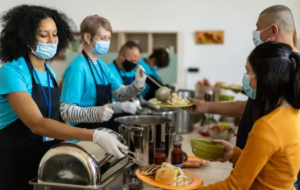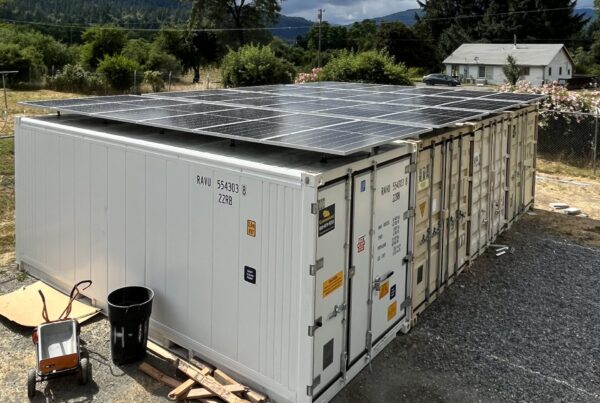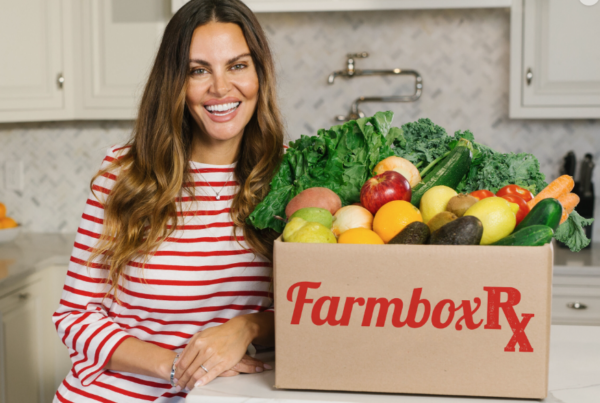Are groceries starting to price you out? In addition to everything else we are still experiencing from 2020 and 2021; inflation and the supply chain is rapidly increasing the costs of your grocery bill. Now imagine having this challenge 365 days a year. This is why it’s critical to support your local #foodbanks and #communityservices that assists those in need, and not just around the holidays but all year-round. Your donations help feed food banks.
Here is an article repost originally published in BuzzFeed – by Megan Liscomb
If Inflation Is Pricing You Out Of The Grocery Store, Here’s Where To Look For Help
“Donations and extra hands go a long way in keeping our communities fed.”
Food insecurity is defined as a lack of consistent access to enough food to lead an active and healthy life. And according to the United States Department of Agriculture (USDA), 1 in 8 Americans experienced food insecurity in 2020.
A recent survey by Credit Karma suggests that the high rates of inflation we’re seeing right now may be worsening this problem. They report that 80% of respondents have noticed higher prices at the grocery store. And of that group, 30% said they could no longer afford to buy all the groceries that they and their family need.
To learn more, I emailed with Credit Karma Chief People Officer and consumer financial advocate Colleen McCreary. Here’s what she had to say:

1. First, you should know that inflation is very high at the moment, and a lot of it is related to the pandemic.
“Inflation in the United States has reached a 40-year high, pricing many Americans out of everyday necessities, including household staples like eggs, produce, and meat,” McCreary explains.
“The inflation we see is a result of various factors, most of them linked to the pandemic and resulting supply chain issues. Some Americans were able to save money throughout the pandemic, thanks in large part to government stimulus programs and restrictions on spending early on in the pandemic. This has helped sustain demand for goods that are now in scarce supply due to a shortage of infrastructure and personnel in the labor market.”
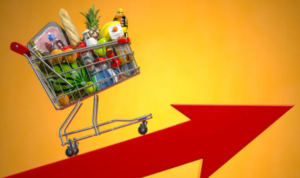
2. And it’s hard to predict if or when prices will start to come back down.
Unfortunately, there aren’t a lot of clear signs yet that this inflation will start to cool down. McCreary says, “This will likely persist as long as consumer demand is high and companies remain ill-equipped to handle it. While we may not see a decrease in prices in the near term, I imagine there will be a slow transition back to the financial landscape we’re more accustomed to. Although, if this pandemic has taught us anything, it’s difficult to predict what’s coming.”
3. Like other effects of the pandemic, inflation is hitting lower-income people the hardest.
Disparities in things like access to healthcare have had a major impact on lower-income folks throughout the pandemic, and now inflation is also taking a larger toll on this group.
McCreary says, “Our most recent study underscored the scale and seriousness of food insecurity across the United States, with low-income households and larger families suffering the most. According to the study, one-third of respondents with household incomes below $50,000 say rising inflation has made it so they can no longer afford groceries. The same is true for households with one or more kids under the age of 18, 38% of which say they’re no longer able to afford groceries due to rising inflation.”
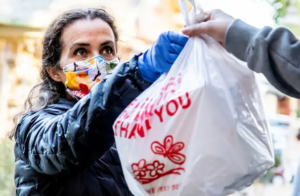
4. Rising prices at the grocery store aren’t the only factors contributing to food insecurity. For many families, remote learning has meant an end to free or low-cost school lunches.
Breaks from school and periods of remote learning can also contribute to food insecurity by taking away meals at school that kids rely on. McCreary says, “For example, many families with school-age children typically receive a free or low-cost meal at school. Now, with many kids learning from home, families have taken on the additional cost of more meals at home. As the pandemic continues and inflation rises, overlapping factors like this make food insecurity an increasingly important issue to spotlight.”
5. If you’re having trouble affording food, federal and state food assistance programs are a place to start.
Experiencing food insecurity can be stressful and scary, but the good news is that there are ways to get help. There are several government programs, both federal and on the state level, that can help if you’re not able to access food. “For example, many states have issued COVID-related funds to provide free lunches for students. Those families who qualify for free/reduced meals could free up some dollars for groceries and other necessities, like school supplies,” says McCreary.
“If you’re someone who faces food insecurity, I encourage you to check out the US Department of Agriculture’s website, where you can search for relevant programs available to you.”
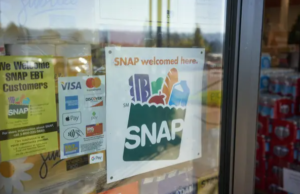
6. And you should also seek out help locally by looking for things like food banks and community fridges near you.
Whether they’re run by a mutual aid group or a local church, you’ll likely discover that there are groups in your area who work to make sure your community is fed. McCreary says, “Most communities have a variety of programs and services offered through local charities, organizations, and religious groups that can be found online via Feeding America’s local food bank search or by dialing or texting 211.”
7. Finally, if you want to help in your community, make donations or consider volunteering with a group in your area.
“I’m an active volunteer at Second Harvest of Silicon Valley and can tell you firsthand that donations and extra hands go a long way in keeping our communities fed,” McCreary says. “Individuals can find volunteer opportunities through Feeding America and sites like VolunteerMatch, but if you’re worried about being exposed to COVID, donations to local food banks and contributions to community fridges are just as helpful.”
